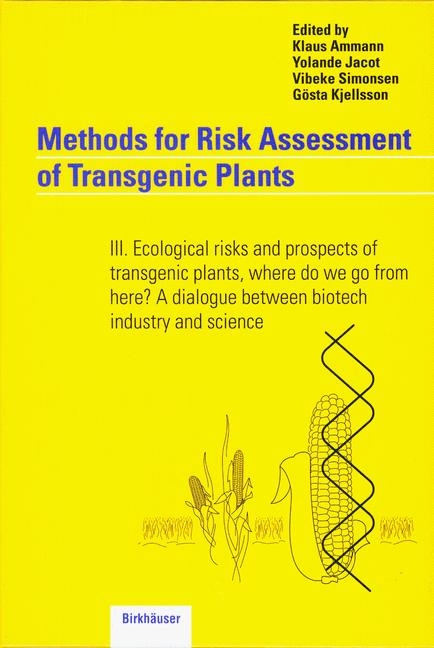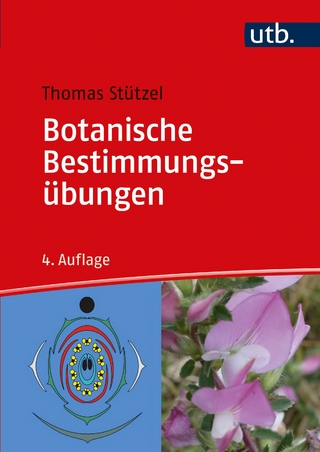
Methods for Risk Assessment of Transgenic Plants
Springer Basel (Verlag)
978-3-7643-5917-1 (ISBN)
- Titel ist leider vergriffen;
keine Neuauflage - Artikel merken
research with transgenic crops on an international level in order to
enhance the discussion regulators and members of the biotech industry.
The goal was to determine the status quo and also to make progress in
times of a first global spread of transgenes in agrosystems about risk
assessment. The dialogue between scientists, regulators and industry
representatives also revealed some lacunes of risk assessment research,
which will have to be filled in the future: We still lack longterm
experience, for which we will have to collect data with scientific
precision. The symposium concluded asking for a risk-oriented longterm
monitoring system based on critical science and hard data.
This volume presents the discussion sessions as well as the scientific
contributions and thus mirrors the risk assessment debate, based not on
exaggerated negative scenarios but on critical science and hard data.
Predicting the ecological impacts of transgenes for insect and virus resistance in natural and feral populations of Brassica species.- A multisite-cooperative research programme on risk assessment of transgenic crops.- Monitoring the environmental impact of transgenic sugar beet Beta vulgaris subspec. vulgaris altissima Döll — are we able to ask the right questions?.- The role of modelling in risk assessment for the release of genetically engineered plants.- odelling the spread of disease resistance gene in natural plant populations.- The wave of advancement of introduced genes in natural plant populations.- Short-term effects, long-term effects and standardisation of limits.- Elimination of agrobacteria from transgenic plants.- Assessment of long-term environmental impacts of transgenic trees: Norway spruce as a case study.- Long-term questions related to agroecological effects of transgenic Bt-crops.- Molecular markers for monitoring transgenic plants.- Biogeographical assay and natural gene flow.- Gene flow between selected swiss crops and related weeds: risk assessment for the field releases of GMO’s in Switzerland.- How do the design of monitoring and control strategies affect the chance of detecting and containing transgenic weeds?.- Transgene movement via gene flow: recommendations for improved biosafety assessment.- Risk assessment of gene flow from a virus-resistant transgenic squash into a wild relative.- RNA recombination in transgenic virus resistant plants.- Transgenic plants and safety regulation.- Monitoring the impact of releases of genetically modified herbicide tolerant oilseed rape in the UK.- Views of non-governmental organizations on the risk evaluation of genetically modified organisms.- Risk assessment of transgenic plants - a comparison with pesticide regulation.- Methodological lacunas: the need for new research and methods in risk assessment.- Where do we come from, where do we go from here?.- From risk assessment to a more comprehensive technology evaluation — contribution of modern plant breeding to sustainable agriculture.- Transgenic plants and the management of virtual risks.- Dilemmas of risk-assessment research for transgenic crops.- Bern conference on gene flow: one scientist’s reflections.- The concept of familiarity and its role in the commercialization of pest resistant genetically engineered plants.- Assessment and management of field testing of transgenic crop plants in east asian countries.- Mechanism of DNA integration into Agrobacterium genome-its relevance to horizontal gene transfer.- Gene flow in selected swiss crops and related weeds, risk assessment for the field release of GMO’s in Switzerland: case of wheat and oilseed rape.- TA-project “genetic engineering, breeding and biodiversity”.- Final summary of the conference.- Acknowledgements.- List of participants.
| Erscheint lt. Verlag | 25.10.1999 |
|---|---|
| Reihe/Serie | Methods for Risk Assessment of Transgenic Plants ; 3 |
| Zusatzinfo | XI, 260 p. |
| Verlagsort | Basel |
| Sprache | englisch |
| Maße | 170 x 244 mm |
| Gewicht | 740 g |
| Themenwelt | Naturwissenschaften ► Biologie ► Botanik |
| Naturwissenschaften ► Biologie ► Genetik / Molekularbiologie | |
| Technik ► Umwelttechnik / Biotechnologie | |
| Schlagworte | biodiversity • Biotechnologie • DNA • Environment • genes • Genetic Engineering • gene transfer • Gentechnologie • Hardcover, Softcover / Biologie • HC/Biologie/Genetik, Gentechnik • Pflanzen • recombination • Risikofaktoren • transgen • Transgene |
| ISBN-10 | 3-7643-5917-X / 376435917X |
| ISBN-13 | 978-3-7643-5917-1 / 9783764359171 |
| Zustand | Neuware |
| Haben Sie eine Frage zum Produkt? |
aus dem Bereich


